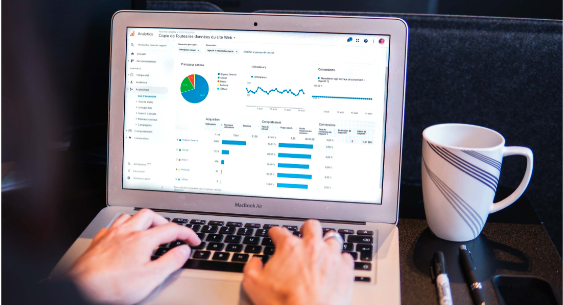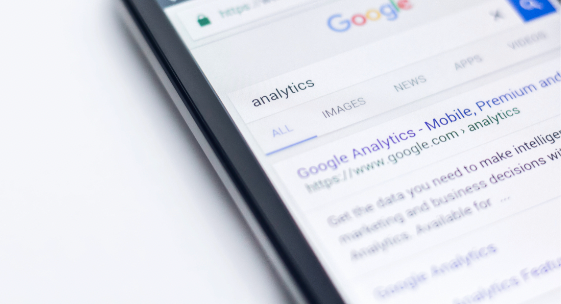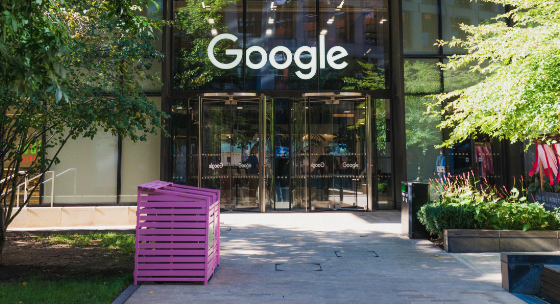Google Performance Max: A Beginner’s Guide to Understanding PMax
It doesn’t take a seasoned marketer to understand the power of Google Ads. With over 4 million active users worldwide, the platform provides incredible opportunities to reach new customers and grow your business. But with great opportunity comes great competition, so it’s essential to set your campaigns up for success from the start.
One way to do this is using Google Performance Max (PMax). PMax is a Google Ads tool that optimizes your campaigns to help you get the most out of your budget. This post will give you a crash course in everything PMax, from how it works to who should use it and why.
Google Performance Max: A Beginner’s Guide to Understanding PMax
It doesn’t take a seasoned marketer to understand the power of Google Ads. With over 4 million active users worldwide, the platform provides incredible opportunities to reach new customers and grow your business. But with great opportunity comes great competition, so it’s essential to set your campaigns up for success from the start.
One way to do this is using Google Performance Max (PMax). PMax is a Google Ads tool that optimizes your campaigns to help you get the most out of your budget. This post will give you a crash course in everything PMax, from how it works to who should use it and why.

What are Google Ads?
Before we understand what Google Performance Max is, we first need to understand Google Ads. The two intertwine with one another, so it’s essential to have a solid foundation.
Google Ads is an online advertising platform that allows businesses to advertise their products and services on Google search results and other Google-affiliated websites. When someone searches for a keyword that you’re bidding on, your ad has the chance to appear at the top of the search results.
When used correctly, Google Ads is a powerful tool that can do wonders for your business. But it’s important to remember that you’re not the only one bidding on keywords. Depending on your industry, you could be up against some stiff competition. This is where PMax comes in.
What is Google Performance Max?
Google Performance Max is a new goal-based campaign type that allows advertisers to access multiple ads at once and manage them easily from one central location.
Performance Max campaigns automatically optimize your ads to help you get the most out of your budget and reach your advertising goals. You can use PMax to advertise on YouTube, Display, Search, Discover, Gmail, and Maps—all from a single campaign.
Keyword-based search campaigns used to be the only way to go, but Google has changed the game with PMax. Now, you have the opportunity to reach your customers across multiple channels and touchpoints, which is essential in today’s customer journey.
With Google Performance Max campaigns, you will see an improvement in your conversions for Google ads and access to more inventory. Simultaneously, Google can deliver your ad to more relevant users, which helps improve your quality score.
The future is not pay-per-click; it’s pay-for-performance! You don’t have to know what lies ahead to be ready for it; Google’s automated solution will allow you to be with the right ad, in the right place, at the right time.
Using PMax Versus Smart Shopping
If you have ever used Google Smart Shopping, then you already understand how PMax works. Google Smart Shopping is a similar campaign type that also automatically optimizes your ads. However, Performance Max gives you more control over your campaigns and allows you to access more features.
Google PMax offers more conversions at a lower cost-per-acquisition (CPA), helping you to get the most out of your ad spend. Additionally, PMax uses Smart Bidding (Google’s AI automated bidding tool) to optimize real-time ad performance. This is used throughout Smart Shopping campaigns, but PMax takes it further by utilizing data from Google Analytics and other first-party sources.
Essentially, Google’s machine learning approach will test which combinations of assets – like images and videos – work best for your campaigns across all advertising platforms. It then applies those learnings to your PMax campaign to improve performance. The goal is to have single-campaign optimization, saving you time and energy in the long run.
Performance Max will replace Google Smart Shopping at the end of Q3 2022. If you haven’t switched over your campaign by then, don’t worry—Google will automatically convert your Smart Shopping campaigns to Performance Max campaigns.

What is Different About PMax?
The primary difference between PMax and other Google Ads campaign types is campaign structure. With PMax, you only need one campaign to manage all of your ad placements. This is a huge time saver, as you no longer have to create separate campaigns for each advertising platform.
The structure also allows for more granular control. For example, you can set different budgets and goals for each ad placement. This wasn’t possible with Smart Shopping campaigns, which used a single budget for all placements.
Additionally, PMax has changed a couple of features from Smart Shopping. For example:
- Ad Groups → Asset Groups
- Product Groups → Listing Groups
Performance Max may be utilized for both eCommerce and lead generating, as opposed to Smart Shopping. This opens up the door to a whole new set of potential customers.
How Does Google Performance Max Work?
Google PMax uses several different factors to automatically optimize your campaigns, including:
- The type of action you’re targeting (conversions, clicks, etc.)
- Your campaign’s historical performance
- The competition for the keywords you’re bidding on
PMax then uses this data to automatically adjust your bids and budget so that you’re getting the most out of your campaigns. For example, let’s say you’re targeting conversions with a PMax campaign. PMax will look at your campaign’s historical performance and the competition for the keywords you’re bidding on to determine how much to bid and how much budget to allocate.
If your campaign is performing well and the competition for your keywords is low, PMax will automatically increase your bids and budget so that you can get more conversions. On the other hand, if your campaign is not performing well or the competition for your keywords is high, PMax will lower your bids and budget to avoid wasting money.

Why Should You Use Google Performance Max?
From unlocking new audience segments to significant data insights, there are many reasons why you should use Google PMax. Let’s find out what they are.
Discover New Audience Segments
Since PMax uses data from multiple sources, you’ll be able to discover new audience segments that you may have otherwise missed. This is especially helpful if you’re targeting a specific country or region.
For instance, let’s say you’re targeting the United States with your PMax campaign. PMax will use data from Google Analytics and other first-party sources to discover new audience segments in the United States that may have been previously inaccessible. This could help you reach your target audience more effectively and efficiently.
Get More Conversions at a Lower CPA
As we mentioned, PMax is designed to get you more conversions at a lower cost-per-acquisition (CPA). This is because PMax uses your campaign’s historical performance data to optimize your bids and budget in real time. Therefore, when you use PMax, you can trust that your campaigns are optimized for maximum performance.
Tangible Data Insights
In addition to getting more conversions, you’ll also gain access to valuable data insights that can help you improve your overall marketing strategy. For example, PMax can tell you which assets – like images and videos – perform well for your campaigns. You can then use this information to create more effective campaigns in the future.
Easier Ad Campaign Optimization
Google PMax makes it easy to optimize your ad campaigns for maximum performance. All you need to do is set up your campaign and let Google PMax do the rest. You don’t need to worry about manually adjusting your bids or budget – PMax will take care of that for you. This hands-off approach to campaign optimization will save you time and energy in the long run.
Targeted Creative Assets
Creative assets can be anything from images and videos to product listings and blog posts. PMax will automatically target these assets to the right audience so that you’re getting the most out of your campaigns. It’s all part of PMax’s commitment to helping you reach your target audience more effectively.
Who Should Use Google Performance Max?
Google PMax is especially well-suited for performance-based advertisers looking to get more conversions at a lower cost per acquisition. But the truth is, any advertiser can benefit from using PMax. This versatile tool can be used to achieve a variety of marketing objectives – from brand awareness to lead generation.
If you’re looking for a tool to help you get more out of your Google Ads campaigns, then PMax is worth considering. It’s easy to use and can help you reach your target audience more effectively.
How To Get Started With PMax?
Getting started with PMax is easy. Here’s a step-by-step guide to creating a Performance Max Google campaign:
#1 Create a New Campaign and Choose Your Goal
First, you’ll need to create a new campaign and select your goal. Google offers a variety of different campaign types to choose from, so make sure to select the one that best aligns with your marketing objectives.
#2 Sign in to Your Google Ads Account
See that blue ‘+’ sign in the top left corner of your screen? Go ahead and click on that. You should be redirected to a new page to sign in to your Google Ads account.
Hint: If you don’t have a Google Ads account, don’t worry – you can create one here.
Constructing a Performance Max Campaign
It’s easy to make a Performance Max campaign. So let’s go through the steps together.
Step 1: Choose Your Objective
The first step is to log into your Google Ads account and select “+ Campaign” in the upper left-hand corner. From there, you’ll be able to choose your campaign objective. For example, depending on your business goals, you might want to select something like “sales” or “leads.
Step 2: Choose Performance Max Campaigns
After selecting your campaign objective, you can then choose “Performance Max” as your campaign type. This will allow Google to optimize your campaigns for maximum performance automatically.
Step 3: Determine Budget and Bid Strategy
The next step is to set your budget and bid strategy. PMax offers various bid strategies to choose from, so make sure to select the one that best aligns with your goals. Of course, you can also adjust your budget at any time.
Step 4: Campaign Settings
Your campaign settings can include anything from location targeting to ad scheduling. Make sure to take the time to fill out all of your settings so that Google can better understand who you want to target with your ads.
Step 5: Create an Asset Group
Asset groups are a great way to organize your ad campaigns. You can create asset groups for different products, services, or even target audiences. This will help you keep your campaigns organized and make it easier to track their performance.
Step 6: Create Ad Extensions
Ad extensions allow you to include additional information in your ads, such as your phone number or website address. Including these extensions can help improve your click-through rate and make it easier for potential customers to contact you.
Step 7: Review Your Campaign
Once you’ve created your ad, you must review it before launching your campaign. This will help ensure that everything is correct and that your ad complies with Google’s advertising policies.
And that’s it! You’re now ready to launch your very own Performance Max campaign.
Google Performance Max is a great way to get more out of your Google Ads campaigns. It’s easy to use and can help you reach your target audience more effectively. If you’re looking for a tool that can help you improve your campaign performance, then Google PMax is definitely worth considering.

Best Practices for Successful Performance Max Google Campaigns
When it comes to Google PMax campaigns, there are a few best practices that you should keep in mind.
Keep it Relevant
Ensure your ad is relevant to the keywords you are targeting. If your ad isn’t relevant, then it’s likely that people will simply click away from it. You don’t want to waste your budget on ads that no one is interested in.
You can use Google’s Keyword Planner tool to help you find relevant keywords for your ad. But remember that you don’t want to stuff your ad with too many keywords. A couple of relevant keywords should be sufficient.
Make it Eye-Catching
Your ad should be eye-catching and attention-grabbing. Remember, you only have limited space to work with, so make sure your ad can stand out.
Using images or videos is one way to make your ad more eye-catching. People are more likely to click on an ad that includes visuals. You can also use colors and fonts to make your ad more attention-grabbing.
Don’t Skimp on the Budget
When it comes to Google PMax campaigns, you need to be willing to spend a bit of money. These types of campaigns can be expensive, but they’re also very effective. So don’t be afraid to increase your budget if necessary.
Hoping for the best with a small budget will not get you very far. If you want your campaign to be successful, then you need to be willing to invest in it.
Test, Test, Test
Finally, and somewhat importantly, you must test, test and test again. Google PMax campaigns are all about experimentation. You must try different things and see what works best for your business.
Don’t be afraid to experiment with different ad formats, keywords, target audiences, etc. The only way to find out what works is to try various things and see what gets the best results.
Google offers a tool called the Ad Preview Tool that can be used to test your ad, so make sure to take advantage of it. Testing is an integral part of any marketing campaign. By testing your ad, you can fine-tune it and ensure it’s as effective as possible.
Google PMax: A Tool Worth Considering
If Google Performance Max sounds like something that could benefit your business, then definitely give it a try. These campaigns can be very practical and help you reach your target audience more effectively. Not to mention, its intelligent software is straightforward to use.
The experts at Adcore have years of experience helping businesses create successful Google PMax campaigns. If you need help, please don’t hesitate to contact us. We would be happy to help you create a campaign that meets your needs and goals. Let’s talk PMax!
Trending Articles
Get exclusive CMO tips that I only share with email subscribers.
PPC Marketing Expert?
Get things done with Adcore Marketing Cloud.
5 essential PPC tools under one roof.
Related Articles
